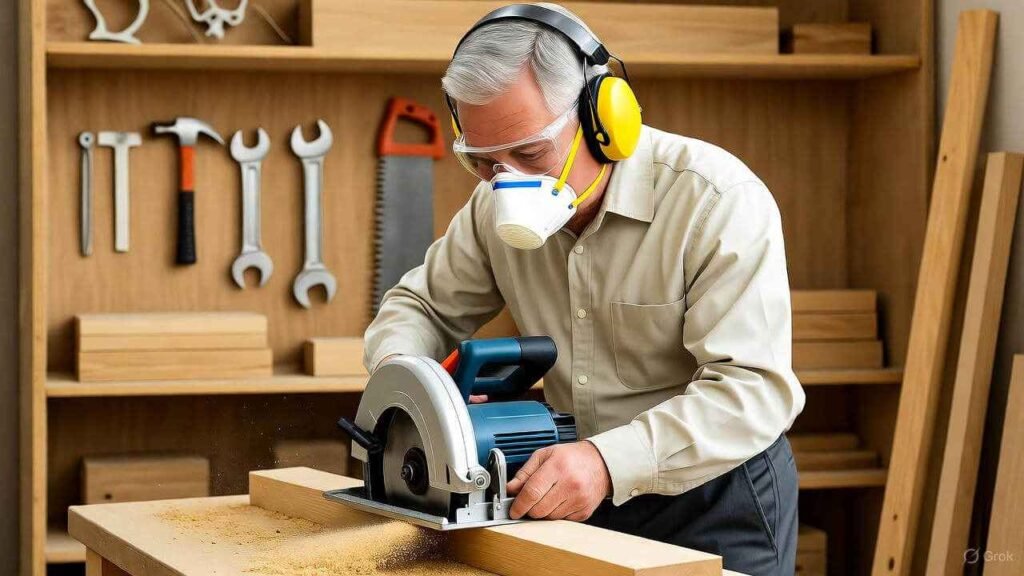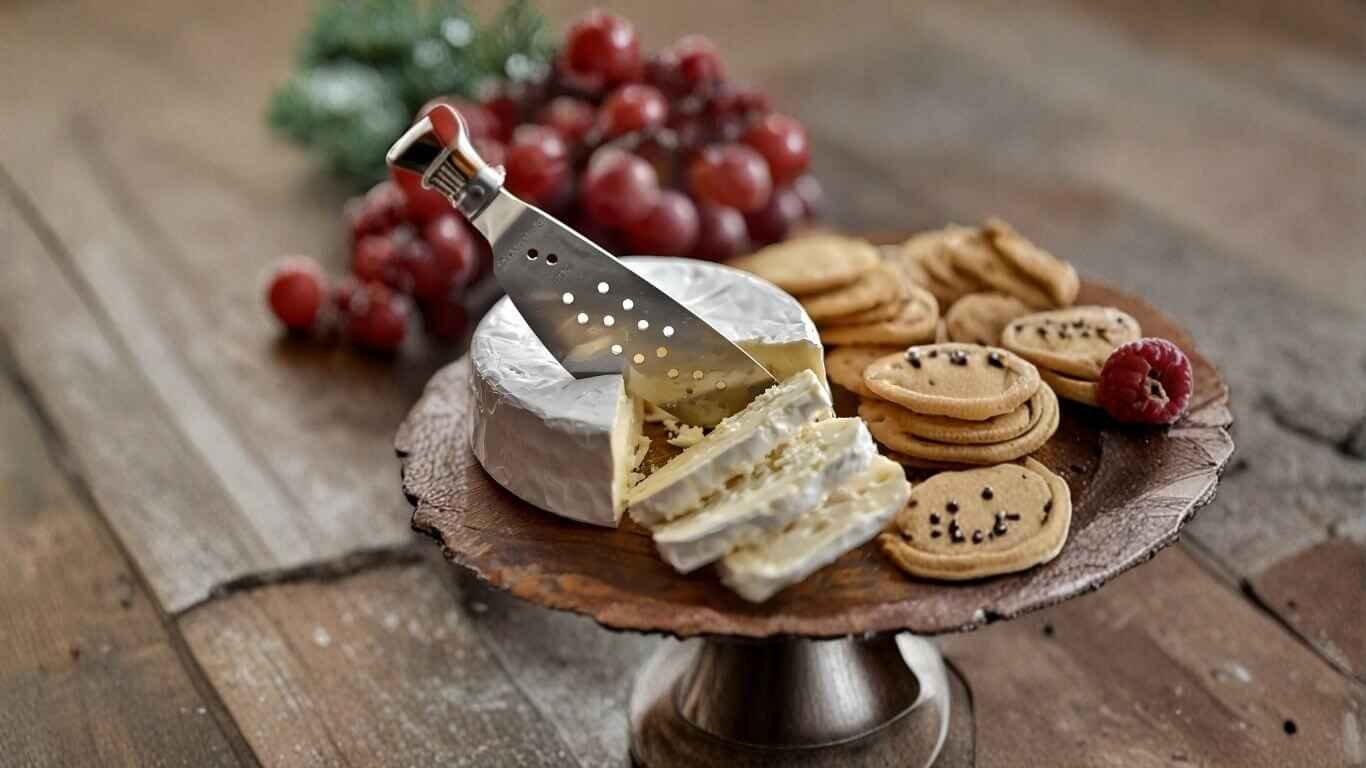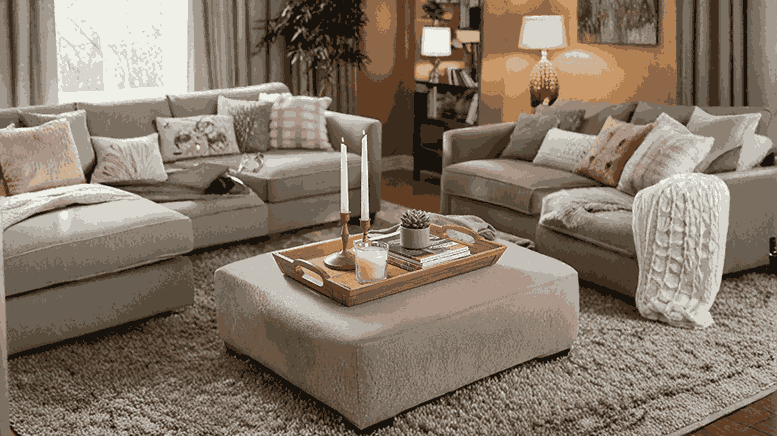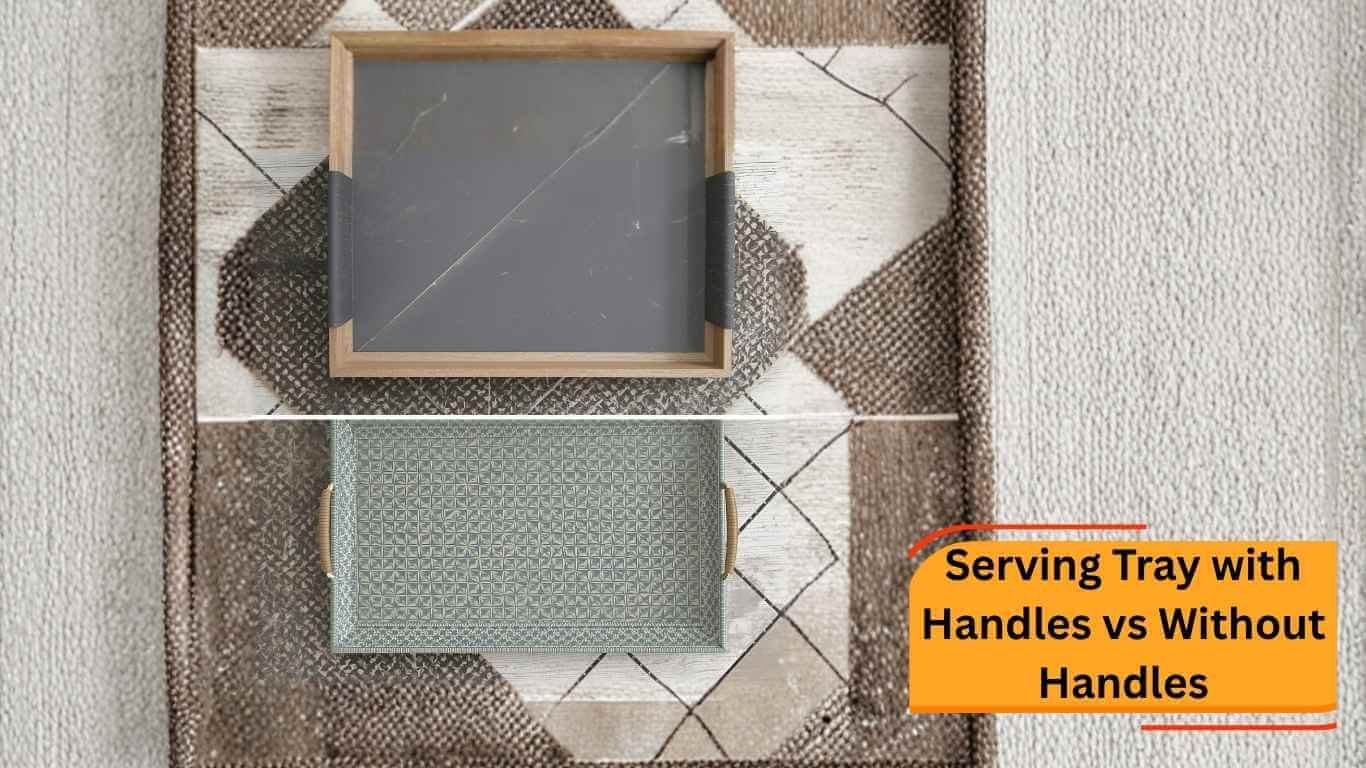Modern entertaining revolves around charcuterie boards, which transform simple gatherings into memorable culinary experiences. A cheese board, a serving tray, or an eye-catching serving board for fresh fruits, cured meats, and snacks, they make an excellent presentation. It’s possible to purchase wood charcuterie boards at home goods stores, but making your own is a rewarding DIY woodworking project. A handmade wooden charcuterie board is more than just a functional serving piece; it’s a personal project that creates something beautiful, durable, and unique you’ll be proud to display.
Creating your own board allows you to choose the perfect size, shape, and wood type. Charcuterie boards made of wood add a rustic, natural touch to any table setting. With the right woodworking tools and a bit of care, they can become cherished parts of your hosting traditions. It covers everything you need to know about making a charcuterie board from wood, from selecting materials to applying the final food-safe finish.
Materials and Tools Needed
Building a beautiful and functional DIY charcuterie board or cheese board begins with gathering the right materials and tools. Making sure you have everything you need before you begin will make the process easier and more enjoyable.
Choosing the Right Wood
Your most important decision will be the type of wood you choose. You need a hardwood that is nonporous, durable, and food-safe. A closed-grain wood is ideal as it is less likely to absorb moisture and bacteria. The following are excellent choices:
- Walnut: This wood is known for its rich, dark color and beautiful grain patterns. Served with cheeses and fresh fruits, it is a durable hardwood that provides a dramatic contrast.
- Maple: A wood that is very hard, dense, and light in color. Its fine, straight grain gives it a clean, modern appearance. The hard maple board is a classic for cheese boards and charcuterie platters.
- Cherry: This wood is characterized by its warm, reddish brown hue, which deepens with age. Knives appreciate its smooth, fine grain and durability.
- Oak: One of the strongest, heaviest, and most durable wood options. In spite of this, it has a more open grain, which can trap food particles. Make sure that oak is sealed exceptionally well with a food-safe finish if you choose it.
Tip: Choose a piece of wood that is at least 1 inch thick. A lumberyard or specialty wood supplier can provide you with suitable boards. Ask for slabs with “live edge” for more unique serving trays. Before finishing, check the wood for cracks and smooth them out with wood putty and a Card Scraper.
Tools List
To achieve great results, you’ll need a selection of both general and specialty woodworking tools:
- Pencil and Measuring Tape: For marking your design.
- Carpenter Square: Ensures your edges and corners are perfectly straight and square.
- Saw: Choose from a variety of options depending on your design: jigsaw, scroll saw, band saw, mitre saw, or a standard hand saw for cutting the shape. A miter saw (also spelled “mitre saw” for UK/AU readers) is ideal for getting precise, angled edges on rectangular serving boards.
- Clamps: To hold the wood securely while cutting and sanding.
- Router (Optional): For creating smooth, rounded edges or adding decorative touches.
- Rotary Tool (Optional): Perfect for fine detail work, engraving, or smoothing tight corners.
- Drill (Optional): If you plan to add a handle or a hole for hanging.
- Palm Sander or Random Orbital Sander: These handheld electric sanders make smoothing surfaces and edges much faster than sanding by hand.
- Sand Paper: An assortment of grits, from coarse (80-grit) for rough shaping to fine (220-grit or higher) for the finish sanding.
- Steel Wool: Use #0000 grade to burnish the final coat of oil or to buff between finishes for an ultra-smooth surface.
- Tack Cloth or Microfiber Towel: For wiping away all dust between sanding stages.
- Disposable Foam Brushes: Ideal for applying food-safe oil or finish evenly across your board.
Finishing Supplies
The finish brings out the beauty of your wood and provides a protective layer that keeps your serving tray or cheese board food-safe.
- Food-Safe Wood Finish: Look for products specifically labeled as “food-safe” or “food-grade.” Some excellent options:
- Mineral Oil (food-grade)
- Beeswax and Mineral Oil blends (board butter/conditioner)
- Pure Tung Oil
- Fractionated Coconut Oil
- Clean, Lint-Free Cloths: For applying and buffing the finish.
Step-by-Step Instructions
This is where the fun begins: creating your wood charcuterie board. For a professional-looking result, follow these steps:
Step 1: Design and Select Your Wood
The first step is to decide what size and shape your board will be. Would you prefer a long, rectangular serving board for large gatherings, a classic paddle shape, or a free-form design that follows the natural edge of the wood? Using a pencil, measuring tape, and carpenter’s square, sketch your desired shape directly onto the wood plank. The live edge slab makes a dramatic statement if you want an organic feel. If you need to cut intricate shapes or curves, a scroll saw or jigsaw will make the job easier and more precise.
Step 2: Cut the Board to Shape
Once your design has been marked, it’s time to cut it out. For safety reasons, clamp the plank to your workbench to prevent it from moving while you are cutting.
- Wear your safety goggles and dust mask.
- Carefully cut along the lines you drew with your chosen saw – whether it’s a jigsaw, scroll saw, bandsaw, or miter saw. A circular saw or a mitre saw with a guide produces neat, clean edges for straight cuts.
- If you are adding a hole for a handle, use a drill with a spade bit or a hole saw. When gripping or hanging, a hole of 1-1.5 inches is usually the right size.
- Fill imperfections or small voids in your wood with wood putty, let it dry, and smooth with a card scraper.
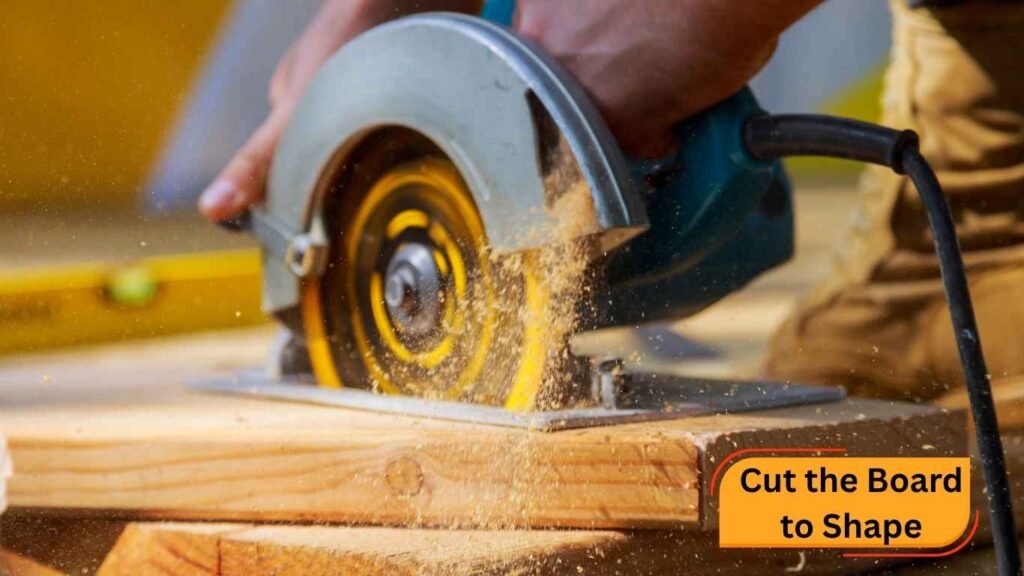
Step 3: Sand for a Silky-Smooth Surface
In order to achieve a professional finish, sanding is undoubtedly the most crucial step. During this process, saw marks are removed, the surface is smoothed, and the wood is prepared for finishing.
- The first step is to use coarse sandpaper, such as 80-grit, for removing major imperfections and shaping the edges. This step is much easier and faster if you have a palm sander or random orbital sander.
- Continue progressing through finer grits: move from 80-grit to 120-grit, then to 180-grit, and finally to 220 grit. All surfaces and edges should be sanded well.
- Pro Tip: After finishing with 220-grit, dampen the board lightly to “raise the grain,” then sand again with fine sandpaper or buff with steel wool.
- Dust should be removed with a microfiber towel or tack cloth before finishing.
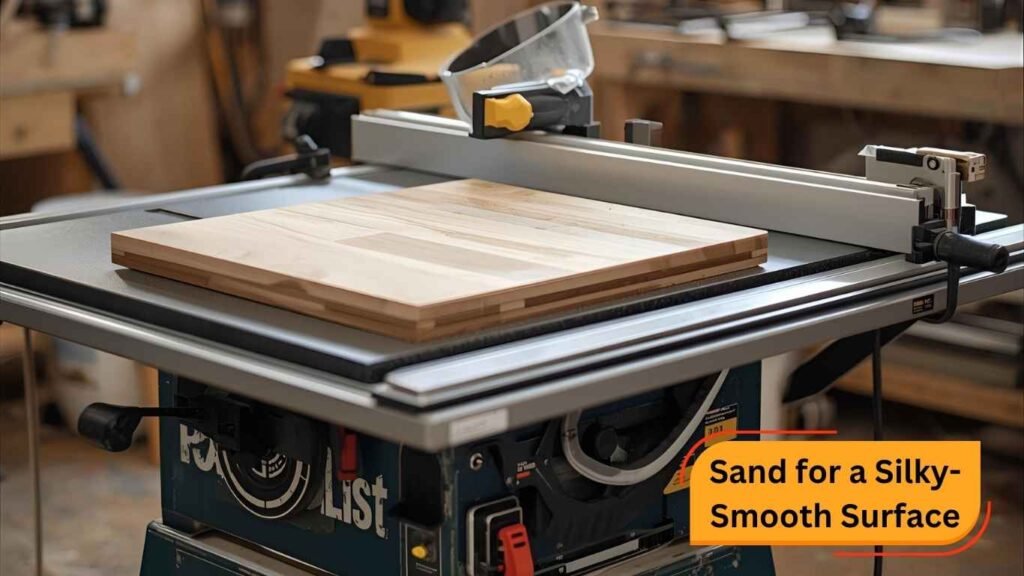
Step 4: Add Custom Details (Optional)
With creative touches, you can personalize your serving board or cheese board.
- Rounding the Edges: Use a router with a roundover bit or sand the edges by hand.
- Handles: Add stylish handles to make carrying easier. To attach, mark the screw holes with your drill and drill through them.
- Engraving: Adding a name, date, or design with a rotary tool or wood-burning pen is a great way to personalize.
Step 5: Apply a Food-Safe Finish
Charcuterie or serving boards benefit from a good finish, which enhances the wood’s natural beauty.
- Make sure the board is placed on a clean, protected surface.
- Using a disposable foam brush or lint-free cloth, generously apply your chosen food-safe finish over the entire surface.
- Allow the oil to absorb for at least 30 minutes, or overnight if possible. Any excess should be wiped away.
- For extra protection, apply several layers and allow them to dry in-between, then burnish the final coat lightly with #0000 steel wool.
Safety Tips
The hobby of woodworking can be rewarding, but safety should always be a priority:
- Wear Protection: When cutting or sanding, always wear safety goggles and a dust mask.
- Secure Your Work: When working with woodworking tools, clamps are essential.
- Tool Safety: Read the manuals and follow best practices when using miter saws, scroll saws, palm sanders, or rotary tools.
- Ventilation: Work with finishes in an environment with adequate airflow.
Caring for Your Wooden Charcuterie Board
Taking proper care of your wood charcuterie boards, cheese boards, and serving trays will extend their lifespan:
- Cleaning: Wipe the surface with a damp cloth and mild dish soap, then dry thoroughly. You should not submerge it in water or put it in the dishwasher.
- Stain and Odor Removal: Make use of coarse salt and half a lemon for deep stains and odors.
- Reapplying Finish: Reapply oil once a month or when your serving board begins to look dry. Using a disposable foam brush or clean cloth, apply the finish.
Enjoy Your Handmade Creation
The process of making a DIY wood charcuterie board combines creativity and craftsmanship. Display fresh fruits, cheeses, and meats in style with your unique serving board. A thoughtful, personal gift for a wedding or housewarming, they also make great wedding or housewarming gifts. After learning how to make a charcuterie board, you can experiment with woods, shapes, and customizations. Get started with your palm sander, scroll saw, or rotary tool!
Additional Resources
Looking to deepen your woodworking skills or connect with fellow enthusiasts? Check out these resources for more guidance and inspiration:
Recommended Tutorials and Guides
- YouTube Channels
- Steve Ramsey – Woodworking for Mere Mortals: Accessible projects and clear instruction for beginners.
- Paul Sellers: Traditional woodworking skills and in-depth tutorials.
- WoodWorkWeb: Tips, techniques, and project ideas.
- Books
- The Complete Book of Woodworking by Tom Carpenter
- The Woodworker’s Bible by Percy Blandford
- The Essential Woodworker by Robert Wearing
- Online Guides
- Family Handyman’s Woodworking Projects
- Popular Woodworking’s Project Library
Communities and Forums
- Reddit: r/woodworking – A supportive place to share photos and ask for advice.
- LumberJocks: www.lumberjocks.com – Forums, project galleries, and tips.
- Instructables Woodworking: www.instructables.com/workshop/woodworking/ – Step-by-step project tutorials, including serving trays, cheese boards, and wood charcuterie boards.
Become a member of these woodworking communities and share your finished serving boards, learn new techniques, and stay inspired!
